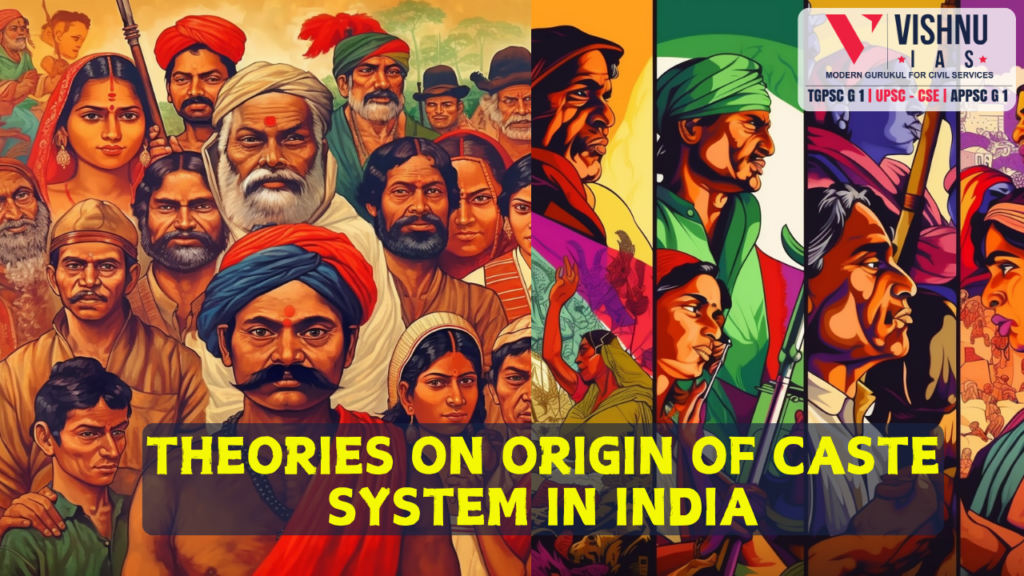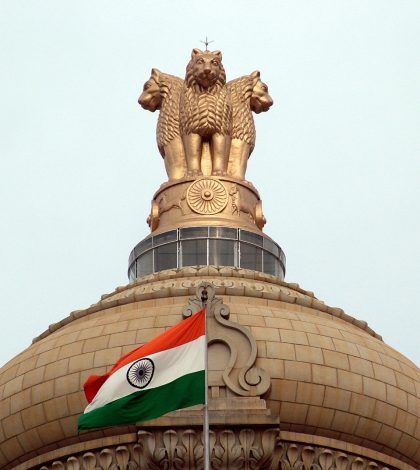Theories on origin of caste system in India
Discuss the theories on origin of caste system and its criticism in India. Differentiate between caste, class and race.
Approach
- Introduction: Contextual introduction about the caste system in India
- Body: Comprehensive analysis of Theories of origin of caste system in India with critically evaluation. And differentiate between caste, class and race.
- Conclusion: Add its contemporary relevance and significance
INTRODUCTION
- The caste system is a complex and ancient form of social stratification that divides people into hereditary groups based on their occupation, status, and ritual purity. The caste system has been prevalent in India for thousands of years and has influenced various aspects of its culture, politics, economy, and religion. However, the exact origin and evolution of the caste system is not clear and has been a subject of debate among scholars and historians. Various theories have been proposed to explain its development, each with its own merits and limitations.
BODY
Theories of Origin of the Caste System in India
- Brahmanical theory
Brahmanical theory is proposed by abbe dubois in his book, “a description of people of India”, according to him caste system is because of Brahmanical domination by putting forth the concepts like occupational purity and ritual superiority.
Critics
M.n srinivas criticized this model-Political clout cannot be the sole factor to give superiority and dominance to a caste group.Racial theory:
Racial theory is proposed by risley, ghuriye, majumdhar and wester mark.
According to them, the caste is the result of clash of civilization i.e.., whenever two distinct racial stocks come into contact intermittent like caste originates.
Risley had put forth various processes of origin and development of new caste:
Migration to new areas, Change in customs (habits), Emergence of new cultsCritics
Hutton criticized the theory based on his studies in Latin America, the places where distinct racial stocks have been coexisting without the emergence of caste.
Then he told, anuloma and pratiloma marriages may be the reason for emergence of new castes but they may not be the sole reason.Occupational theory
Proposed by nesfield in his book “Brief view of caste system of northwest province and oudh”
According to him, the hereditary occupation led to the establishment of guilds.
Over the period, the practice of endogamy might have given rise to formation of caste.Critics
D.N. Majumdhar accepted occupational origin of caste partially where as senart said, it is the caste first and occupation later and not always the other way.
He studied in north west Russia and observed that, groups were first established in north west Russia as a ritual of purity and later picked up specific occupation.Kelkar’s theory of origin of caste:
Kelkar’s theory of origin of caste is explained in his book, “ORIGIN OF CASTE”. According to him tracing back the origin of caste to a particular date line is impossible.
Caste similar to any social institution cannot be defined and cannot find the original reasons for its origin.Hence gave characteristic features:
Accordingly enumerated the list of characteristics:
Commensality restrictions, Hereditaryoccupation.
Endogamy, Purity and pollution concept.
Critics
- Kelkar’s view of caste system is as similar as ghuriye.
- Guha, depending upon the psychological explanations of endogamy is not possible to explain the origin of caste.
- This also raised the question whether caste first or endogamy first.
Present Relevance and Significance
- Persistence of Caste-based Discrimination
- Despite legal abolishment, caste-based discrimination and untouchability still persist in many parts of India.
- Socio-economic disparities continue to align closely with caste lines, affecting access to education, employment, and social mobility.
- Affirmative Action Policies
- Policies like reservation in education and employment aim to address historical injustices and provide opportunities for lower-caste groups.
- These policies remain contentious and have sparked debates about meritocracy, reverse discrimination, and the efficiency of caste as a basis for affirmative action.
- Political Mobilization
- Caste identities have been instrumental in Indian politics, with various political parties mobilizing caste-based vote banks.
- This has led to both the empowerment of marginalized communities and the perpetuation of caste-based politics.
- Urbanization and Modernization
- Urbanization and economic modernization have led to some degree of caste dilution, especially in metropolitan areas.
- However, caste consciousness and endogamy (marrying within the same caste) remain prevalent even among urban and educated populations.
- Cultural Resilience
- Caste continues to influence social interactions, rituals, and community organizations.
- The resilience of caste as a cultural institution underscores the complexity of eradicating deeply rooted social hierarchies.
Differentiating Caste, Class, and Race
Table
Concept | Definition | Key Characteristics | Exa Examples |
Caste | A hereditary social stratification system primarily found in India, based on birth and occupation. | – Rigid and hereditary<br>- Determines social status and occupation<br>- Enforced through social and religious norms | The Indian caste system with Brahmins, Kshatriyas, Vaishyas, and Shudras |
Class | A system of social stratification based on economic status, education, and occupation. | – More fluid than caste<br>- Based on wealth, education, and power<br>- Allows for social mobility | The class system in industrialized countries, where individuals can move between classes based on their achievements |
Race | A classification of people based on physical characteristics, ancestry, or genetics. | – Based on physical traits like skin colour<br>- Often used to justify social hierarchies<br>- Can be fluid and influenced by migration and intermarriage | Racial categories such as Caucasian, African, Asian |
Understanding these distinctions helps in analysing how different forms of social stratification impact individuals and societies.
CONCLUSION
The caste system’s origins are multifaceted, involving religious, historical, evolutionary, and economic dimensions. Its persistence and relevance in contemporary India highlight the ongoing struggle between tradition and modernity. Addressing the caste issue requires a nuanced understanding of its historical roots and a committed effort towards social justice and equality.
Anthropology Full Course at Vishnu IAS Academy
What does Course Offer?
- 4 Months (250+ Class Hours)
- Online (App + Web) / Offline / Hybrid Mode of Classes
- Live + Recorded Videos Access For 1 Year
- 2 Hour Live Class From Monday to Saturday (1.5 Hours for Class + ½ Hour for Doubt Solving)
- Foundation to Advanced Level of Teaching
- Simple and Integrated Content
- One Stop Solution Books
- Regular Value Added Content
- Current Affairs & Case Studies Modules
- Daily Answer Writing Practice
- Weekly Grand Tests On Sundays & Evaluation With Guidance and Topper Will be Rewarded
- 500+ Model Answers
- 9 AM – 9 PM Support System
- Free GS Current Affairs
- Free Interview Guidance for Anthropology


